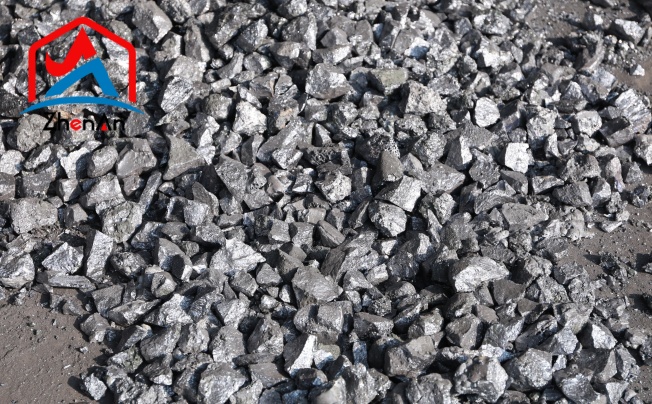Silica, a mineral abundantly found in the Earth's crust, is a fundamental component of rocks, sand, and soil. Its prevalence across various industries makes it a ubiquitous occupational hazard. With its microscopic particles capable of penetrating deep into our respiratory system, understanding the risks associated with silica exposure becomes paramount.
Identifying Individuals at Risk
High-risk occupations and professions
Silica exposure is particularly prevalent in certain occupations and professions where workers come into contact with materials that contain crystalline silica. Construction workers, miners, and foundry workers are among the high-risk groups.
In the construction industry, activities such as cutting, grinding, and drilling concrete or masonry products can release fine particles of silica. Similarly, miners involved in drilling or crushing rocks that contain silica can be at a heightened risk. Foundry workers who handle sand molds or castings containing silica are also susceptible to exposure.
Within these occupations, specific tasks pose an increased risk of silica exposure. Construction workers engaged in activities like sandblasting, concrete finishing, or stonework face significant exposure due to the generation of airborne respirable crystalline silica particles.
Miners working in underground tunnels or operating heavy machinery with poor ventilation may also encounter higher concentrations of silica dust. Foundry workers involved in mold-making or pouring molten metal into molds are typically exposed to large quantities of silica-containing materials.
Age and Gender Considerations
Developmental stage
Children, being in a crucial developmental stage, are particularly susceptible to the harmful effects of silica exposure. Their smaller bodies and developing respiratory systems make them more vulnerable to airborne particles. Moreover, their natural curiosity often leads them to explore their surroundings, increasing the likelihood of exposure to environments where silica particles are present.
Studies have shown that prolonged exposure to silica during childhood can lead to reduced lung function, impaired respiratory growth, and increased risk of respiratory disorders later in life. Therefore, parents, caregivers, and regulatory authorities must ensure that children are protected from environments that harbor significant amounts of crystalline silica.
Aging population
As individuals age, several physiological changes occur within the body that can influence their susceptibility to silica-related complications.
The aging process often leads to a decline in lung function due to changes in lung elasticity and reduced efficiency of gas exchange. Silica particles can exacerbate these age-related changes by causing inflammation and scarring within the lungs.
Furthermore, elderly individuals may already be managing pre-existing health conditions such as chronic obstructive pulmonary disease (COPD) or cardiovascular diseases. These underlying conditions can further compromise their ability to tolerate and recover from any damage caused by inhalation of silica particles.
Gender disparities in susceptibility
Studies suggest that estrogen—the primary female sex hormone—may provide some level of protection against certain occupational lung diseases like silicosis due to its anti-inflammatory properties that help mitigate inflammation caused by exposure. On the other hand, testosterone—the primary male sex hormone—can increase oxidative stress responses within cells when exposed to toxins such as crystalline silica dust.
Moreover, occupational exposures vary between genders with some industries being predominantly male-dominated or female-dominated. For instance, occupations such as construction work or mining tend to be male-dominated industries where workers may encounter high levels of airborne particulates containing crystalline silica. On the other hand, certain occupations dominated by women such as pottery-making or jewelry manufacturing also involve potential risks related to crystalline silica exposure.
Special Cases that Should Avoid Silica Exposure
Investigating Potential Risks for Both Mother and Fetus when Exposed to High Levels of Crystalline Silica
Pregnancy is a delicate period in a woman's life, and it is crucial to safeguard both the mother's well-being and the developing fetus.
Studies have indicated that pregnant women who are exposed to high levels of crystalline silica may face an elevated likelihood of complications such as preterm birth, low birth weight, and even congenital abnormalities. The mechanisms behind these effects are not entirely understood but are believed to be related to inflammation caused by silica particles interfering with placental function or crossing through the placental barrier into fetal tissues.
Furthermore, maternal exposure to crystalline silica during pregnancy has been associated with an increased risk of respiratory problems in infants and children. The developing respiratory system of a fetus is particularly vulnerable to toxic substances like silica particles. Exposure during pregnancy may lead to long-term consequences such as reduced lung function, asthma development, or other respiratory conditions later in the child's life.
Analyzing How Compromised Immune Systems May Heighten Vulnerability to Silicosis
Silicosis, an occupational lung disease caused by inhaling crystalline silica dust over an extended period, can have more severe consequences in individuals who are immunocompromised. The presence of an impaired immune system reduces the body's capacity to mount an effective response against deposited silica particles in lung tissue.
As a result, these individuals may experience more rapid disease progression compared to those with normal immune function. Moreover, prolonged exposure may lead immunocompromised individuals towards higher susceptibility not only to silicosis but also to other opportunistic infections that can further compromise respiratory health.
Preventive Measures
Implementing Engineering Controls and Work Practices
When it comes to preventing silica exposure, implementing engineering controls and work practices is crucial. These measures aim to reduce the amount of silica dust generated and ensure its containment. One effective method is the use of local exhaust ventilation systems, which capture dust at the source before it becomes airborne.
Additionally, wet methods such as using water or mist during cutting or drilling operations can help suppress dust formation. Employers should also establish effective work practices like regular equipment maintenance, proper cleaning procedures, and minimizing dry sweeping to prevent unnecessary dispersion of silica particles.
Personal Protective Equipment (PPE)
While engineering controls are vital, personal protective equipment (PPE) plays an important role in safeguarding individuals from silica exposure. Respiratory protection, such as N95 respirators or powered air-purifying respirators (PAPRs), should be provided to workers in high-risk occupations where significant levels of silica dust are present.
It is essential to ensure that PPE fits properly and is regularly maintained for optimal effectiveness. Other forms of PPE such as protective clothing, goggles, and gloves should also be provided when appropriate.
Educating Workers and Raising Awareness
Education and awareness campaigns are pivotal in preventing silica-related health issues among at-risk individuals. Employers must provide comprehensive training programs that educate workers about the hazards associated with silica exposure and how to minimize risks effectively.
This includes teaching proper usage of control measures like ventilation systems, wet methods, and PPE. Furthermore, fostering a culture of safety through ongoing communication about prevention strategies will help create a workplace environment where every individual takes responsibility for their well-being.






